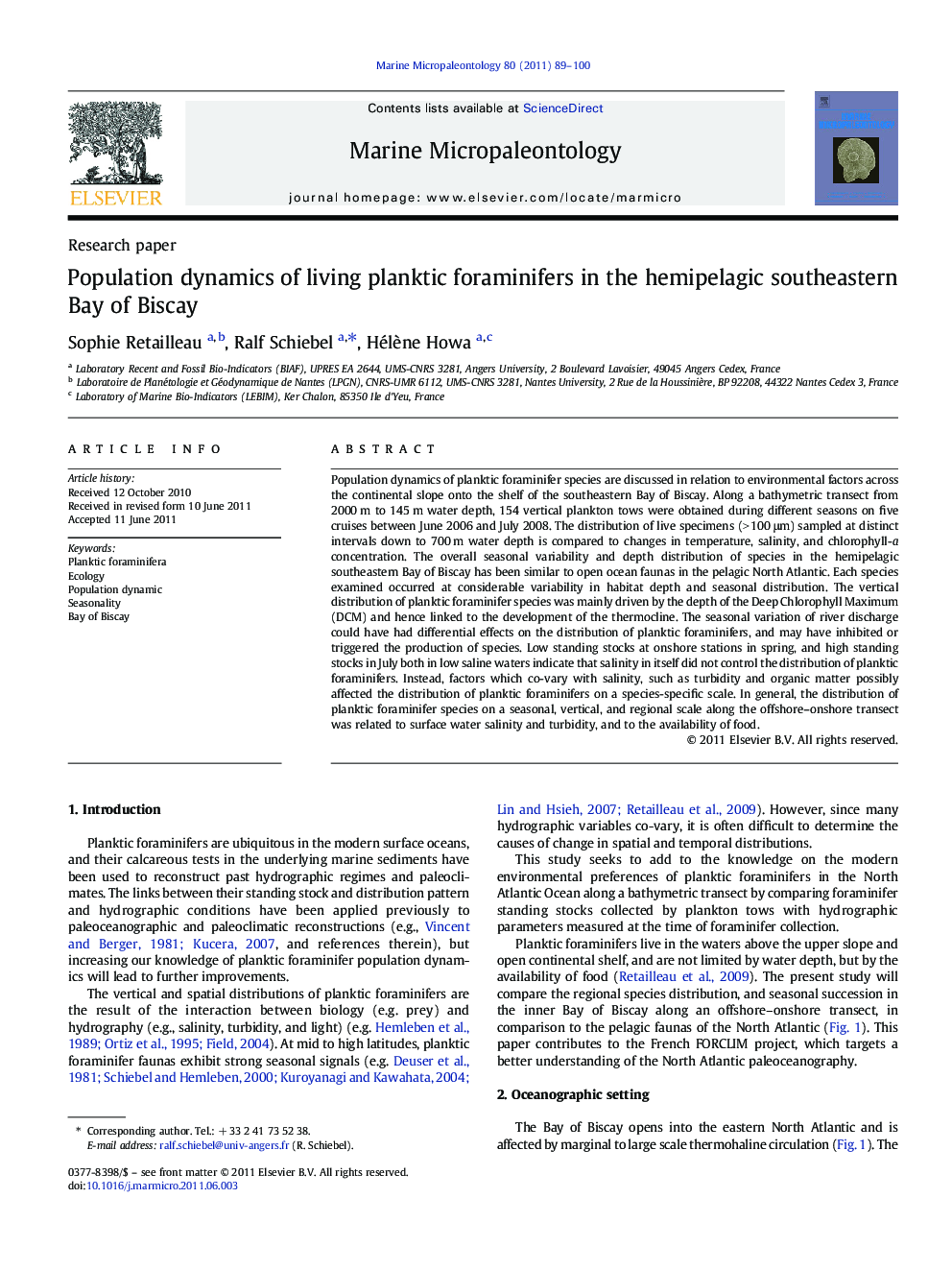| کد مقاله | کد نشریه | سال انتشار | مقاله انگلیسی | نسخه تمام متن |
|---|---|---|---|---|
| 4749056 | 1642198 | 2011 | 12 صفحه PDF | دانلود رایگان |

Population dynamics of planktic foraminifer species are discussed in relation to environmental factors across the continental slope onto the shelf of the southeastern Bay of Biscay. Along a bathymetric transect from 2000 m to 145 m water depth, 154 vertical plankton tows were obtained during different seasons on five cruises between June 2006 and July 2008. The distribution of live specimens (> 100 μm) sampled at distinct intervals down to 700 m water depth is compared to changes in temperature, salinity, and chlorophyll-aconcentration. The overall seasonal variability and depth distribution of species in the hemipelagic southeastern Bay of Biscay has been similar to open ocean faunas in the pelagic North Atlantic. Each species examined occurred at considerable variability in habitat depth and seasonal distribution. The vertical distribution of planktic foraminifer species was mainly driven by the depth of the Deep Chlorophyll Maximum (DCM) and hence linked to the development of the thermocline. The seasonal variation of river discharge could have had differential effects on the distribution of planktic foraminifers, and may have inhibited or triggered the production of species. Low standing stocks at onshore stations in spring, and high standing stocks in July both in low saline waters indicate that salinity in itself did not control the distribution of planktic foraminifers. Instead, factors which co-vary with salinity, such as turbidity and organic matter possibly affected the distribution of planktic foraminifers on a species-specific scale. In general, the distribution of planktic foraminifer species on a seasonal, vertical, and regional scale along the offshore–onshore transect was related to surface water salinity and turbidity, and to the availability of food.
► Succession of planktic foraminifers in the SE Bay of Biscay is similar to the pelagic North Atlantic.
► Vertical distribution of planktic foraminifers is driven by the development of the thermocline.
► Seasonal variation of river discharge inhibits or triggers production of species.
► Turbidity and organic matter derived from the continent affected the species distribution.
► In general, the distribution of pl. foraminifer species was related to food, salinity and turbidity.
Journal: Marine Micropaleontology - Volume 80, Issues 3–4, September 2011, Pages 89–100